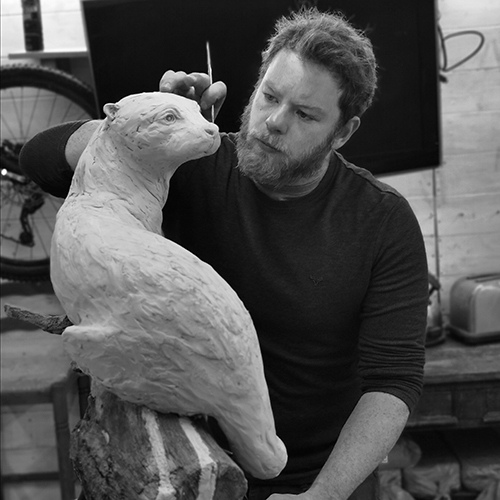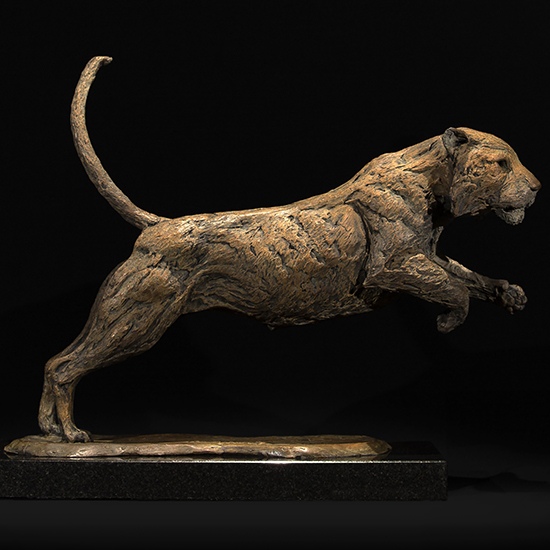Knox Field, Rising Star in Wildlife Sculpture
Knox Field, a young artist who excels at creating magnificent animal sculptures, recently gained recognition among art collectors in the UK. By using both traditional metal casting and his own creative methods, Knox Field displays sophistication sculpting animal expressions and body movements. His works exhibit grandeur, grace, and dignity. Oftentimes, one can also find humor in some of Knox’s pieces.
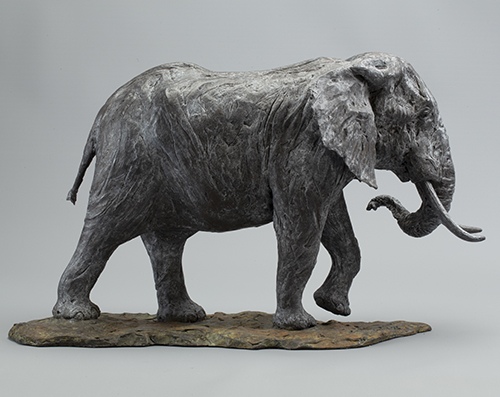
Growing up in West Sussex (he currently lives in Oxfordshire), England, Knox is close to nature and wildlife. The rural environment provides fertile grounds for Knox’s inspiration. There is no wonder that he can sculpt lively and vivid works with single colors. Pieces such as Chicken and Chicks or Cocker Spaniel not only engage people’s attention but also awaken the love and compassion of animals in people’s hearts.
Knox had the privilege of apprenticing with some of the most renowned wildlife sculptors in the UK who guided him on the path to becoming a master sculptor.
We hope you enjoy reading the following interview and learn more about Knox and his sculptures.
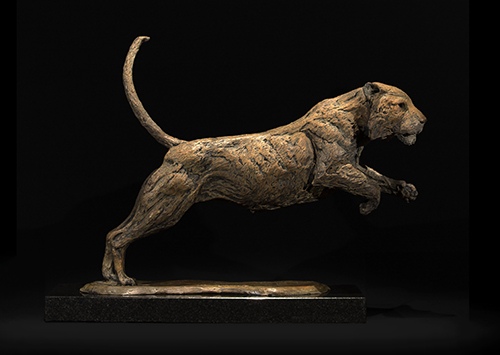
Q: Your wildlife sculptures are really impressive, blending realism with artistic expression. Please tell us about your training. What led you to become a sculptor?
A: Firstly, Thank you, that’s very kind. My love and desire to become a sculptor went hand in hand with my love of irritating school teachers, I suppose. To Quote Richmal Cromptons William Brown, “ Readin’ all those books makes me wonder whether anyone ever dies natural.” This was very much my mentality.
Luckily, my Dad, who although himself an academic, also has a wicked artist streak of his own and sent me packing up to his sculptor mate Mark Coreth. I spent three days working with him on three life-sized lions, and that was it. Plan A had been made. There is still no plan B.
I have since been developing my style and building on my knowledge through making. I am lucky however to be in contact with a few fantastic sculptors who are always available to impart some wisdom should I need it.
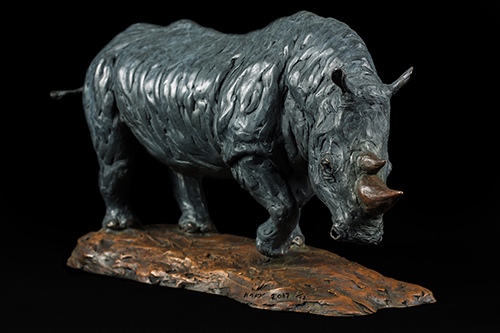
Q: Please share with us your passion for wildlife and which types of animals most attract your attention in art.
A: This I find is a constantly moving goal post. At first, all I wanted to sculpt were big cats and fierce predators where the subject was either hunting, stalking, or generally getting ready to make a meal out of something fluffy. This is still somewhat true, however, I have recently been focused on animals slightly closer to home. My most recent project is an otter out of the water and on alert. I have spent a lot of time on the composition to really capture the animal in fluid motion. It’s a hard question to answer and each sculpture presents different possibilities. An elephant needs weight, a chicken needs to be playful, a dog wants a biscuit. These are all things I like to represent in my work.
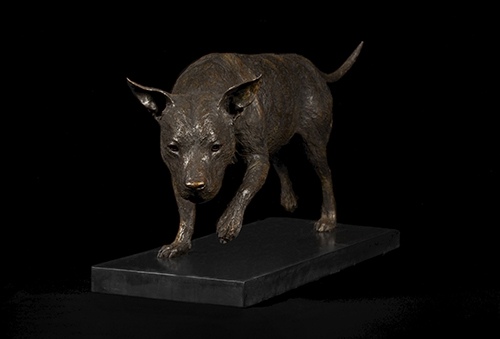
Q: What materials do you usually use when making your sculptures and why do you choose those materials?
A: For me, this slightly depends on the scale of the sculpture and the finish I want to achieve. For the most part, however, I use plasticine. It’s the material I have spent the most time with and understand the best. Through my years of working with plasticine, I have developed a few techniques that are now fundamental to my style. For example, when creating hair on an animal (although I have tried with several) there is no other material that achieves the result I am working towards.
Q: Please name some artists who have most inspired you.
A: Wow, that could be an endless list. There are so many artists that I admire and different aspects of their work resonate. You have Mark Coreth who captures movement fantastically. Nichola Theakston’s depiction of peace and tranquillity in her monkeys boggles my mind. Hamish Mackie creates beautiful silhouettes. Nick Fiddian-Green for his horse head that has become an international sensation. Nick Bibby whose technical ability is unparalleled in my opinion. I mean the list could go on for pages. I find inspiration can be found anywhere, for example, I was in a garden centre the other day and among the stacks of resin cast statues, I saw an owl that had a really glorious face. I could see real expression and life in that owl.

Q: How do you observe wildlife for your artwork: close-up observation or something else?
A: Where possible, I like to study an animal first hand and gather my own source photography. This is one of the reasons I have recently been working on animals that are native to the UK. When working on dog commissions, I often like to work with the dog in front of me. It’s by far the best way to capture the beasty’s expression and make a sculpture truly reflect an individual dog’s character.
Q: You grew up in West Sussex, England, a region famous for its natural beauty and deep history. Was there a particular place in your region that you liked to visit for inspiration?
A: I have been living in Oxfordshire now for some years but I do return to Sussex regularly. Both places hold fantastic opportunities to gather source material. I wouldn’t say there is a specific place that holds special value to me though as most British wildlife can be found all over the island. With exception of course to coastal animals and red squirrels that can only be found in a few places. Scotland is a great place to visit as large swaths of it are untouched and both domestic and wild animals are a regular sighting.
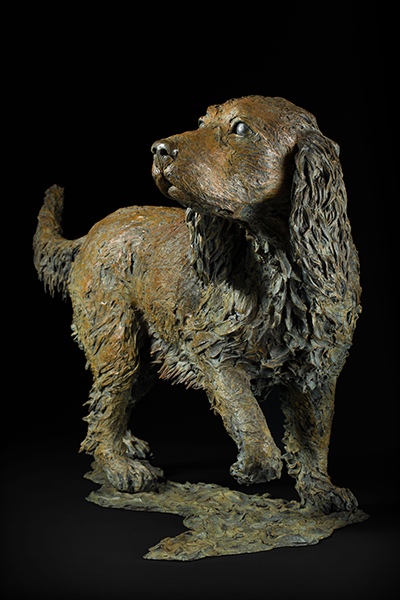
Q: Please share with us some of your favorite pieces and the stories behind them.
A: I’m not sure I have a favorite. After a piece is finished and cast, I inevitably start to notice elements that I would change or improve on. I think it’s common for most artists to never be completely happy with what they have made in the past. If I had to choose, I’d say the Shoebill Stork was great fun to work on. I was watching one of Sir David Attenborough’s fantastic BBC documentaries when I first saw this prehistoric-looking creature and it absolutely blew my mind. They are such crazy, terrifying-looking bird’s and I fell in love with them immediately.
I think the cocker spaniel I made for a client in Scotland also has to be up there but mainly for the technical challenge it posed. Being a show cocker it had an enormous amount of feathering under its belly and long wispy ears. I had to develop a new way of working with plasticine to meet this challenge and the technique has stuck.
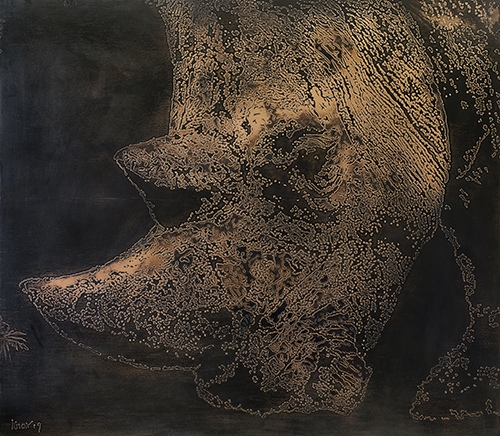
Q: Do you have any future plans that you would like to share with our readers?
A: There are a few new projects that I have either started or have plans to start. Alongside my series of otters I mentioned earlier, I have been working on some 2D tactile etched copper plates that focus on close-up details I was very excited to show last year back in March. However, best-laid plans and all that. As I’m sure a lot of people have found with the pandemic, I have had to change my approach somewhat. This has led me to spend more time developing and refining this new range of work. Although I am sad I haven’t been able to show any of this in a public space yet, it should mean I can hit the ground running when the world opens up again.
